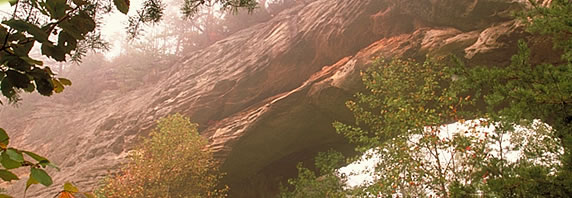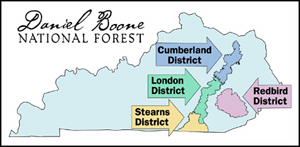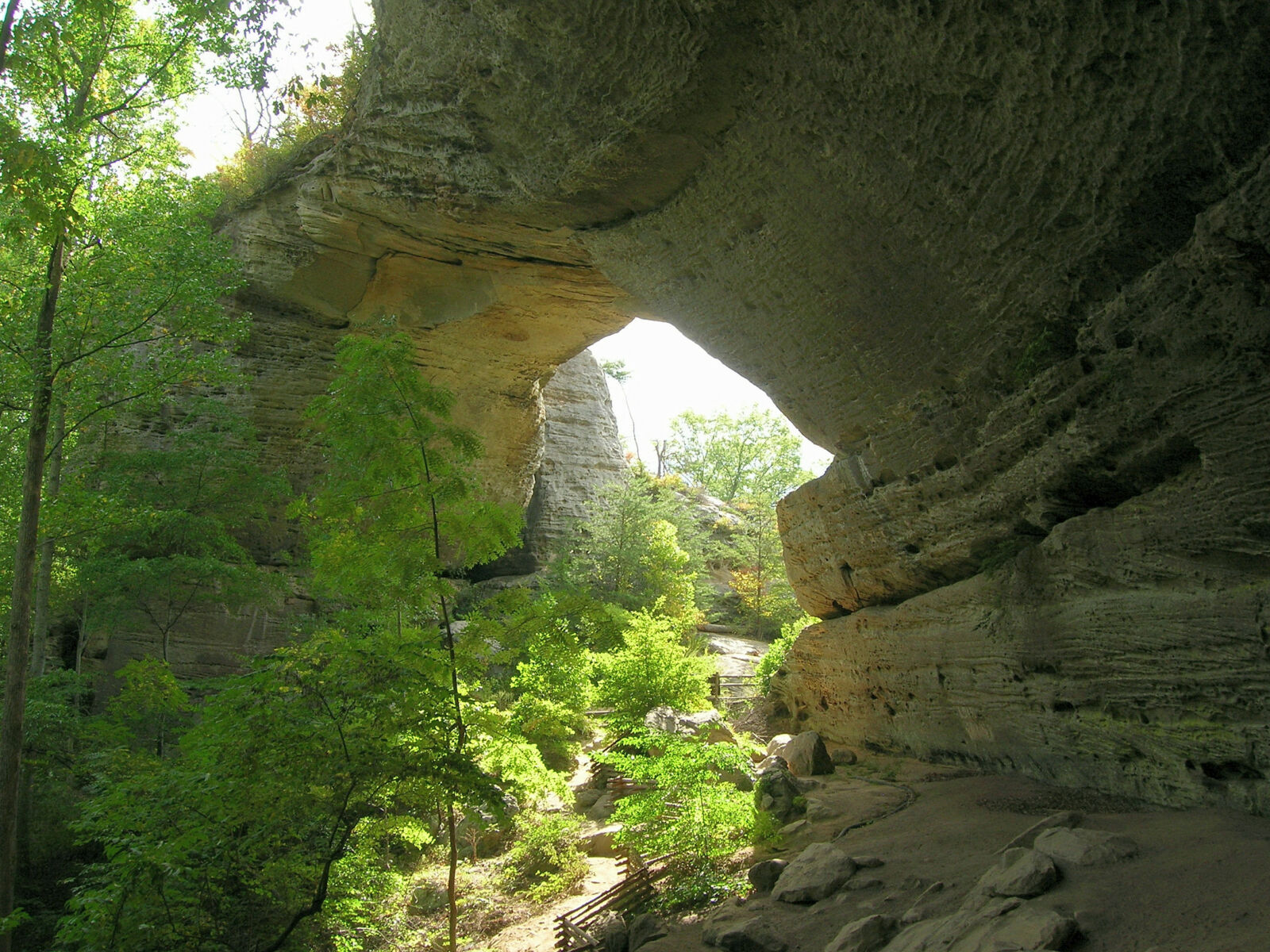According to hunters and biologists across the state, last spring (2011) was one of the best turkey seasons Kentucky has ever seen. So, with this year’s season officially underway, now is a great time to visit the Daniel Boone National Forest. The Forest has a bit of everything for everyone, so whether you’ll be searching for the perfect turkey to put on the table or a few bird species to cross off your bird watching life-list, the Daniel Boone is just waiting to be explored this spring!

Like many of the newer forests purchased under the Weeks Act of 1911, the Daniel Boone (originally the Cumberland National Forest) was acquired by President Franklin Roosevelt’s administration for restoration by the newly created Civilian Conservation Corps. The Forest’s name is a lasting tribute to Daniel Boone, the legendary frontiersman who was a prominent figure in the exploration and settlement of Kentucky.

Stretching the length of the eastern mountains from the northern to the southern part of the state, the Daniel Boone is full of rugged country defined by steep cliffs, narrow valleys and distinctive rock arches. With over 3,400 miles of cliffs and over 100 arches carved by ancient waters and winds, this unique landscape is home to the largest concentration of rockshelters and arches east of the Rocky Mountains; you’ll feel like you’re wandering through the desert of the southwestern United States, except that the climate is wet enough to support a thriving hardwood forest.
The cliffs and rockshelters make for unique microclimates where certain plant and animals thrive; Virginia big-eared bats call the dark crevices and shelters home, while the threatened White-haired goldenrod grows along the cliffs of the Red River Gorge, the only place it’s found in the world.
The cliffs and rockshelters also hold a wealth of history. Evidence of early plant domestication has been found in the area, as well as archeological remnants of use by both native peoples and settlers. Word has it that one of the caves was even used by Daniel Boone himself.

There are many ways to explore and enjoy the rugged landscape of the Daniel Boone. Multiple-use trails stretch throughout the 700,000 acre Forest, popular with equestrians, off-highway vehicles and everyone in between. If it’s the thrill of whitewater you’re in search of, you can paddle your way through some of Kentucky’s best on the North Fork of the Cumberland River. And if you’re more interested in watching the water rush by from the banks, then head to Cumberland Falls, the second largest waterfall east of the Rockies (after Niagara of course).
For some incredible night hiking, visit the falls when the moon is at its fullest; the falls cast an iridescent “moonbow” for two nights before and after the full moon. Of course, hunting is always a popular activity on the forest. During the 1960’s, a portion of the Forest was designated as a Primitive Weapons Area set apart for hunting with longbow, crossbow, or muzzle-loading firearms. Regulations have changed over the years, but the area remains unique in that muzzle-loading firearms are still allowed today.
So, take a clue from Daniel Boone and get out and explore the cliffs and valleys of his namesake Forest. Take a step back in time and immerse yourself in Kentucky’s rich history, see your first “moonbow,” or take advantage of what’s promising to be another great turkey season. Whether you return home with a bird or just some great memories, you’ll be sure to have an unforgettable time on the Daniel Boone!

